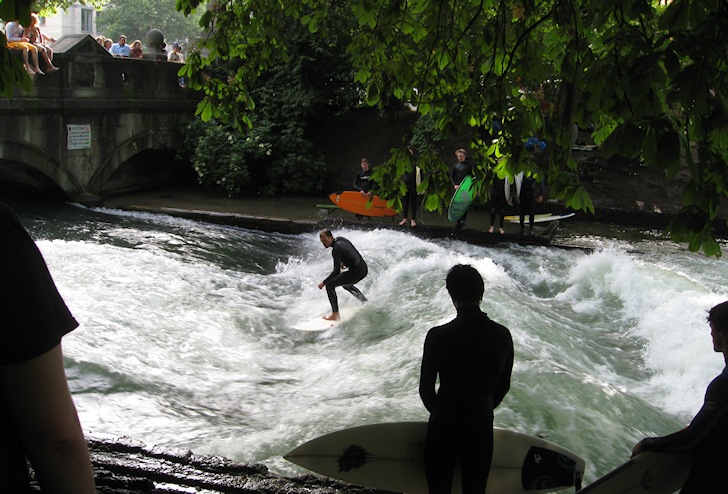Located in Western-Central Europe, Germany is a major cultural and historical reference and the seventh-largest country in Europe, covering 357,021 square kilometers of territory.
It has a 3524-kilometer long coastline in the north bathed by the North and Baltic Seas and is bordered by Denmark, Poland, Czech Republic, Austria, Switzerland, France, Luxembourg, Belgium, and the Netherlands.
The climate is mostly moderate, ranging from continental in the east, with dry, cold winters and hot summers, to milder maritime-influenced weather in the north and northeast, and mountain climate in the Alpine regions of the extreme south.
Germany's coastline is 64 percent sandy beach, 18 percent artificial, 12 percent muddy, and only 5 percent protected by a soft rock.
The humid westerly winds are prevailing, and rainfall occurs in all seasons.
Windsurfing and kiteboarding are very popular water sports in Germany, but surfing has kept a steady community of hardcore fans.
Remember that a 4/3 wetsuit is the minimum protection required.
In the Baltic Sea, Pelzerhaken, Weißenhäuser Strand, Hohwachter Bucht, and Damp 2000 are the best German surfing options.
In the North Sea, there are more surf spots to explore in German territory.
Buhne 16 Kampen, Kartoffelkiste Wenningstedt, Brandenburger Strand Westland, Samoa Rantum, Norderney and Borkum are great wave peaks in the region.
Germany is also famous for its surfing river wave. In Munich, you can't miss the endless wave ride found at the Eisbach River.
